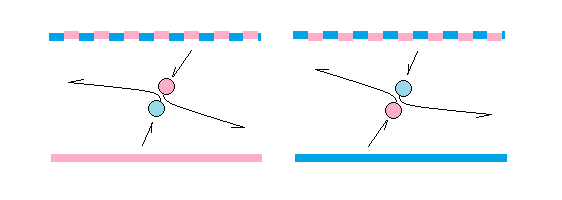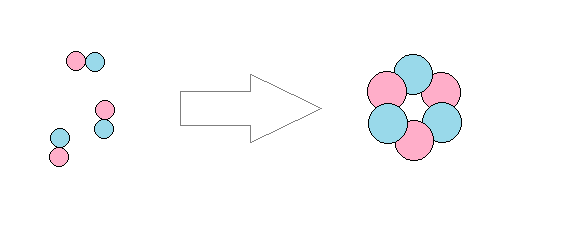The Casimir effect is a phenomenon in which two neutral surfaces attract or repel each other when in extremely close contact. The effect has been used as evidence for the existence of a zero-point field because the magnitude of the attracting force can be calculated from quantum field formulas. However, there are other ways to calculate this force that doesn't require quantum mechanics.
This YouTube video, pointed out to me by "Escaped Serf" on Facebook, explains how the Casimir effect may be nothing more complicated than polarization of dipoles.
Polarization in this context means rearrangement of charge, which occurs naturally wherever dipoles are free to move in response to nearby charges. Polarization explains why charged surfaces always attract neutral surfaces.
 |
| Charged surfaces attracting neutral surfaces |
Polarization is the mechanism behind the phenomenon of capacitance. It allows charge surfaces separated by a dielectric to store electric energy. This may in turn explain why gravity is unevenly distributed across the planet.
 |
| Uncharged and charged capacitor |
Polarization also explains why dipoles align into structures where positive ends hook up to negative ends. This is how chemical bindings are produced, and the phenomenon of sticky light can also be understood in terms of dipoles.
 |
| Dipoles hooking up to make a simple structure |
Dipoles exist everywhere because atoms are dipoles. There are also good reasons to suspect that photons are dipoles.
 |
| The dielectric photon |
This in turn explains the phenomenon of electron-positron pair production.
 |
| Electron-positron pair production from photon |
It also explains the Faraday effect in which light is polarized by magnetism.
 |
| Photons polarized by a magnet |
With so many phenomena either clearly or probably due to polarization of dipoles and dielectrics, it's no surprise that Hendrik Casimir's first thought was to explain his short range attracting force in these terms.
Casimir initially believed that the force he had discovered was related to Van der Waals force. However, he found the solution unsatisfactory. The calculated force didn't exactly match what he was measuring, and the calculations were complicated. Casimir was therefore delighted to find a simpler way to calculate his force by using equations found in quantum field theory.
However, the Casimir effect will sometimes produce a repelling force, and this has to be quietly ignored for the quantum field theory explanation to hold. Van der Waals force, on the other hand, is sometimes attracting and sometimes repelling for reasons that are easily explained in terms of our current understanding of the atom.
 |
| Atomic nucleus surrounded by ten electron clouds = Neon |
The electron clouds surrounding atomic nuclei repel electron clouds of other atoms in such a way that only very close contact can lead to attraction. If such close contact isn't achieved, or cannot be achieved, there will be no attraction.
All of this can be explained by Van der Waals force. But there may nevertheless be something additional going on. If we allow for an aether of zero-point particles, as suggested in my physics, we can propose situations where these particles get stuck between surfaces, thus preventing Van der Waals force to fully kick in.
 |
| Zero-point particles surrounding an electron |
This would lead to real world measurements that deviate somewhat from those predicted by Van der Waals force alone, which is exactly what Hendrik Casimir discovered and frustrated him into looking for alternative explanations.
No comments:
Post a Comment